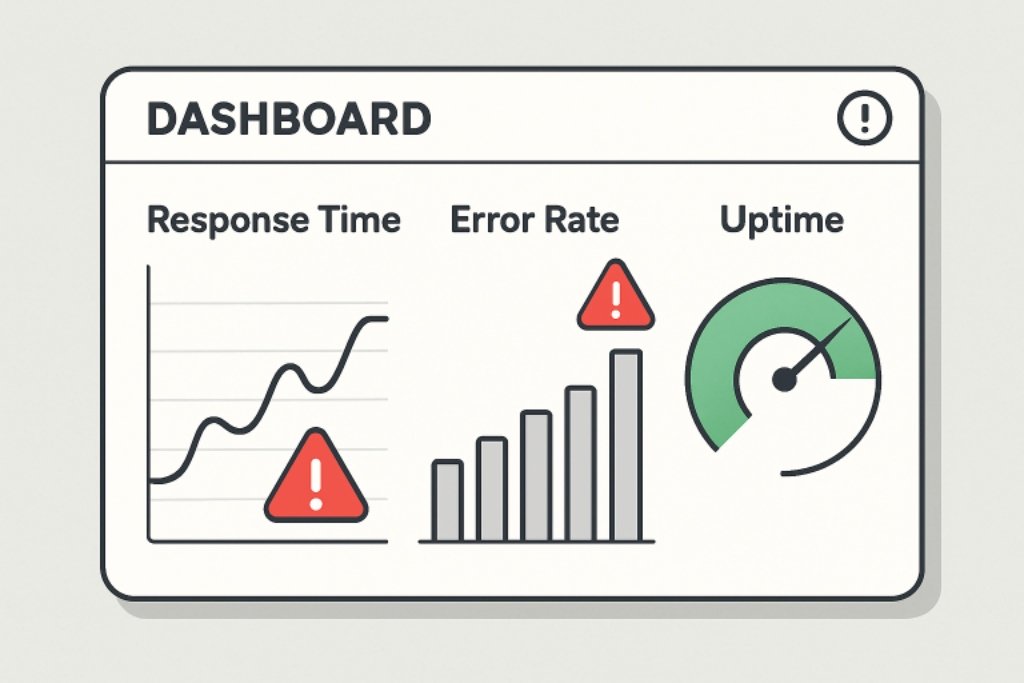The digital economy depends on seamless, high-performing applications that keep businesses running and customers satisfied. Ensuring application reliability is no longer a luxury but a requirement. As organizations shape their digital experiences, application performance monitoring is regarded as a foundational element for maintaining reliability, availability, and high-quality user experiences.
Modern enterprises operate in a complex ecosystem of cloud-native, hybrid, and legacy applications. The ability to proactively observe and optimize these IT environments is imperative. Leveraging advanced monitoring solutions, organizations can reduce downtime, accelerate innovation, and swiftly resolve issues, all of which are essential to meeting increasing customer expectations in the digital age.
Understanding Application Performance Monitoring
Application performance monitoring is a practice focused on tracking the health, speed, and overall performance of software applications. It encompasses a range of metrics, such as response times, transaction throughput, error rates, and infrastructure utilization, that together paint a full picture of an application’s operational state. By systematically monitoring these variables, IT teams can detect degradation, pinpoint bottlenecks, and optimize performance before problems escalate.
Effective application performance monitoring includes real-time data collection, historical analysis, and alert mechanisms. This ongoing visibility empowers organizations to understand how users interact with their services, how resources are allocated, and where improvements are necessary. Ultimately, it’s about delivering applications that consistently meet business goals and user demands.
The Importance of APM in Digital Reliability
In a digital landscape where even a few seconds of downtime can translate to substantial financial losses and damaged reputations, APM stands as a bulwark for digital reliability. The benefits include:
- Proactive Issue Detection: APM tools identify potential failures before they have a tangible impact on end-users, enabling rapid response and remediation.
- Enhanced User Experience: Detailed monitoring ensures that latency, outages, and glitches are swiftly addressed, enhancing customer satisfaction and loyalty.
- Optimized Resource Utilization: With clear visibility into software and infrastructure health, organizations can prevent resource wastage and align capacity with actual needs.
This strategic approach fortifies IT resilience and maintains the reliability that is critical for digital-first businesses.
Integrating AI and Machine Learning with APM
The future of APM lies in its union with artificial intelligence (AI) and machine learning (ML). AI-powered APM platforms transcend traditional, reactive monitoring by harnessing predictive analytics and automating repetitive maintenance tasks. These systems rapidly analyze massive data sets to uncover trends, anomalous patterns, and imminent risks. By doing so, they allow organizations to move from firefighting to a preventative posture, reducing mean time to repair (MTTR) and limiting the scope of performance incidents.
Machine learning, when integrated with APM, takes into account not only historical data but also real-time fluctuations and user behaviors. This enables automated recommendations and interventions, such as allocating more resources to handle spikes in demand or preemptively resolving issues before they affect operations. Such capabilities are crucial for IT teams navigating increasingly complex environments and striving for continuous service availability.
Effective APM Strategies for Enhanced IT Resilience
- Adopt a Holistic Approach: Implement end-to-end monitoring to provide visibility across the entire technology stack, from user interfaces to backend infrastructure. This ensures seamless performance throughout the application lifecycle.
- Implement AIOps: Embrace AI-driven IT operations to accelerate detection, automate remediation, and elevate incident management. AIOps platforms help distill actionable insights from large data volumes, making IT ops more agile and intelligent.
- Continuous Improvement: Foster a culture of ongoing evolution by revisiting tools, processes, and metrics. Regular reviews ensure organizations remain ahead of changing technology trends and business demands.
Implementing these approaches empowers teams to preempt disruptions, optimize digital operations, and deliver superior end-user experiences.
Real-World Examples of APM Success
Industries from finance to healthcare are realizing transformative gains through robust application performance monitoring. For instance, an energy company’s IT division used APM to synchronize its operations and monitor distributed assets in real time. By introducing AI-powered insights, the company detected anomalies early, automated responses to recurring incidents, and achieved significant reductions in unplanned downtime.
Similarly, major financial institutions deploy APM to assess the health of high-traffic transaction applications and digital banking platforms. The move toward predictive monitoring enabled proactive adjustments during peak usage periods, preserving uptime and improving customer trust. In increasingly digital marketplaces, such case studies are setting new benchmarks for performance and reliability.
Future Trends in APM
- Increased AI Integration: Future APM tools will harness smarter algorithms for even deeper analytics, further reducing human intervention and making performance management more autonomous.
- Focus on User Experience: Next-generation APM will track digital user journeys, contextualize problems based on user segment and geography, and provide feedback loops to development teams for faster iteration.
- Expansion to Edge Computing: As more applications run on decentralized edge infrastructure, APM tools will evolve to offer granular visibility into devices and networks at the edge, ensuring reliability in distributed and resource-constrained environments.
The evolution of APM is closely tied to the increasing complexity of digital environments. Organizations that stay ahead of these trends will continue to achieve superior reliability and user satisfaction.
Conclusion
Application performance monitoring (APM) plays a crucial role in anchoring digital reliability by providing organizations with critical visibility into their digital systems, enabling proactive management of IT infrastructure, and supporting data-driven optimization of services. Through the integration of advanced artificial intelligence (AI) and machine learning technologies, APM empowers IT teams to not only predict potential issues before they occur but also to resolve problems quickly and efficiently, minimizing downtime and user impact. It also helps streamline resource allocation, optimize system performance, and enhance overall operational efficiency. Making strategic investments in APM solutions and staying alert to emerging trends and innovations in the field enables organizations to cultivate resilient, adaptive digital ecosystems. This proactive approach fosters ongoing customer trust, improves user satisfaction, and positions organizations for sustained success in an increasingly interconnected and digital world.





